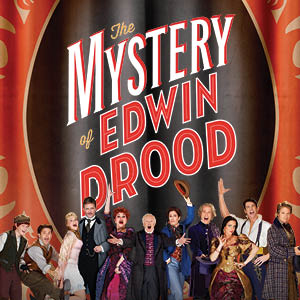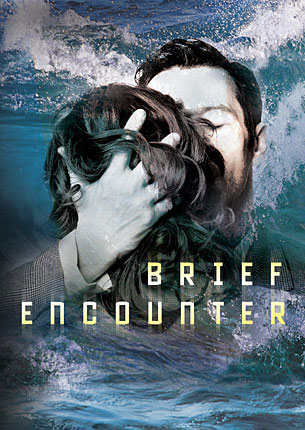I’ve long anticipated a Broadway revival of Bye Bye Birdie. The 1960 show, which took on the national frenzy over Elvis Presley’s drafting, was a sleeper hit and won the Tony Award for Best Musical. Its success made Broadway stalwarts of director-choreographer Gower Champion, composer Charles Strouse, lyricist Lee Adams and librettist Michael Stewart. The show brought Dick Van Dyke to the attention of Hollywood and made a bona fide Broadway star out of Chita Rivera. The musical has its share of detractors and granted it’s a well-worn property, but I’ve always found it pleasant. The score is quite memorable, in its mix of character songs and rock and roll parodies. The book has a great deal of charm and warmth, and in spite of some creaking it can still work. It’s never failed to entertain me. That is until now.
Bye Bye Birdie has been brought back to Broadway by way of the Roundabout Theatre Company in what is one of the most charmless, miscast and misdirected revivals of a musical I have ever seen. There was considerable hype surrounding this revival as it’s the first time the show has been on Broadway since the original closed in 1961. It is also the inaugural production of the new Henry Miller’s Theatre on 43rd Street. One can only hope that the theatre’s next tenant isn’t as colossal a disappointment.
There was excitement as the house lights went down and the orchestra struck up that familiar overture. That was short-lived. After a clever tableau establishing the MacAfee family behind a scrim came an unnecessary montage of video projections showing screaming fans and the revival’s Birdie, Nolan Gerard Funk, gyrating in period costume. For some reason, my heart started to sink. The broad, cartoonish nature of this prologue hinted that the powers that be didn’t trust the material. It turned out to be much worse.
TV star John Stamos is headlining as Albert Peterson, the nerdy mama’s boy composer and would-be English teacher. Stamos has tackled the Broadway musical in the revivals of How to Succeed, Cabaret and Nine, and his singing is somewhat pleasant, but too inconsistent. His acting consists of two-dimensional facial expressions and constant mugging. The show’s breakout hit song, “Put on a Happy Face” showcases Mr. Stamos in what looks to be an homage to Dick Van Dyke – if Dick Van Dyke suffered from St. Vitus’ Dance. The rest of the show he spends meandering around the stage pouting. Perhaps twenty years ago he might have made an appropriate Conrad, but he completely misses the mark as Albert.
Gina Gershon, who also showed up in Cabaret and scored good notices for her work in the very funny Boeing Boeing last season, is entirely out of her element. She cannot sing. She cannot dance. And she is entirely lost at sea performing musical comedy material. Instead of hitting the notes, she scoops, spins and rattles around the music with an unpleasant vibrato. On the rare occasions she’s actually on pitch, it’s still nothing to cheer about. She recently told reporters that the “Shriner’s Ballet” was cut because it was too “gang-rapey.” After several tepid high kicks and awkward spins, it became quite obvious that she just couldn’t have handled it. She also somehow manages to make Rose, for whom the audience should cheer, unnecessarily cold and unlikable. To her credit, Gershon was the hardest working of the leads, clearly trying to make sense of her character but ultimately falling remarkably short.
The role of Rose Alvarez was originally written to be Polish for Carol Haney. After Haney got sick, they signed Chita Rivera and made necessary rewrites. Rose is a Puerto-Rican American (by way of Allentown, PA) who is written without a single cultural stereotype, and in fact spoofs them in “Spanish Rose” late in the second act. Of all the talented actresses in New York City, there wasn’t one musical theatre actress of Hispanic descent that could have played the part? It would have been an ideal vehicle for Andrea Burns or Karen Olivo, et al.
Jayne Houdyshell, who gave one of the best performances I’ve ever seen in Well, is merely adequate as Albert’s overbearing, racist mother Mae. She scores a few laughs but seeming somewhat uncomfortable in the part. The immensely talented Dee Hoty is entirely wasted in the non-role of Mrs. MacAfee. While always a welcome presence, Ms. Hoty deserves a better part in another musical. Allie Trimm, of last season’s 13, plays the ingenue Kim MacAfee. She gets off to a winning start in “How Lovely to be a Woman,” but is the victim of the monotony going on around her. Matt Doyle mostly blends into the scenery as Hugo while Nolan Gerard Funk plays Conrad Birdie like Ricky Nelson on a bad day.
The most egregious casting is Bill Irwin as Harry MacAfee. The role was originated by Paul Lynde, who put a definitive stamp on the part of Kim’s irascible, put-upon father. Irwin hasn’t a clue what he’s supposed to be doing with the character or with musical comedy, and compensates with bizarre, unintelligible line readings. (Not to mention the gothic horror that is his singing voice). The only way I can think to describe his performance is as an unsettling hybrid of William Shatner on crystal meth and Michael Douglas in Falling Down. Mr Irwin was nothing short of brilliant with his Tony-winning triumph in Who’s Afraid of Virginia Woolf? and fascinating in last season’s overrated Waiting for Godot. But his performance here is an epic fail for an otherwise stellar presence in New York theatre. The audience seemed to eat up his shameless, inappropriate shtick, but it also seemed that they were laughing at the show, not with it.
If there is anyone to blame for this mess, it is director-choreographer Robert Longbottom. For two and a half hours he has actors onstage singing and dancing without giving them any reason to do so. There is such incongruity and incompatibility that the principals seem more suited for a road company of Lifeboat. There is no chemistry between anyone and ultimately no reason the audience should care. The show is a heartfelt, gentle send up of late 50s culture and calls for someone like Gower Champion to guide it with a light touch and a stroke of genius. Longbottom’s presentation of period satire is akin to a child hammering a rectangular block into a circular hole. The show should be effervescent and fun. Instead it feels forced, contrived and joyless.
The dancing is bland and unoriginal, and some of the production numbers are distractingly unpolished. In the middle of the second act, “A Lot of Livin’ to Do” comes out of nowhere and goes back there almost instantly. This particular number goes on far too long and lands with a dull thud, which applies to practically everything in this maelstrom. The powers that be pointlessly switched “Kids” and its reprise. “Spanish Rose” comes off as spiteful afterthought. By this point, no one cares. And just when you thought it was safe to leave the theatre, the show curtain flies up for a tacked-on rendition of the film’s insanely catchy title song leading into the curtain call.
The costumes by Gregg Barnes hammer home when the show is set, but instead of designing for character he has designed for cleverness. Nowhere is this more evident than in the migraine-inducing sea of color-coordinated pastels worn by the ensemble, who look like rejects from a flimsy Universal-International feature. Not helping matters at all is the hideous set by Andrew Jackness, which is made up of unsightly sliding panels and traveling set pieces. The iconic “Telephone Hour” is ruined by cluttered, busy phone booths that overwhelm the teenagers. Whether or not it was their intention, their work outwardly mocks the show and the period in which it’s set. While we’re talking design, the unflattering fright wig Ms. Gershon wears at the top of the show gives her an uncanny resemblance to Amy Winehouse.
Not everything was a total loss. It was nice to see teenagers playing teenagers and they sure give it their best. The ensemble boasts some folks I’ve enjoyed in other shows: namely Jim Walton (virtually unrecognizable as the bartender), John Treacy Egan and the always delicious Patty Goble. And then there was the precocious Jake Evan Schwencke as Randolph MacAfee, who was the only one with lines who seemed to have a grasp on what he was supposed to be doing.
In a big surprise, the orchestra sounds extraordinary with new charts by Jonathan Tunick that emulate Robert Ginzler’s originals. (Tunick was a protege of Ginzler, and the so-called “Ginzler flutes” in “Put on a Happy Face” are homaged in Tunick’s orchestration of “Waiting for the Girls Upstairs” from Follies). There are a whopping sixteen musicians listed in the Playbill. An orchestra this large is an unusual change of pace for Roundabout, who are notorious for skimping on the music.
Don’t be fooled by the cutesy advertising – the show is a bomb from the world go. If you’re looking to revisit this classic musical, you’d be better off waiting for your local high school or community production. Or if you need a quick fix, I suggest getting your hands on the superlative original cast album and having a listen at home. It’s worlds better than wasting your time and hard-earned money on the egg being laid by this Birdie at the Henry Miller.



